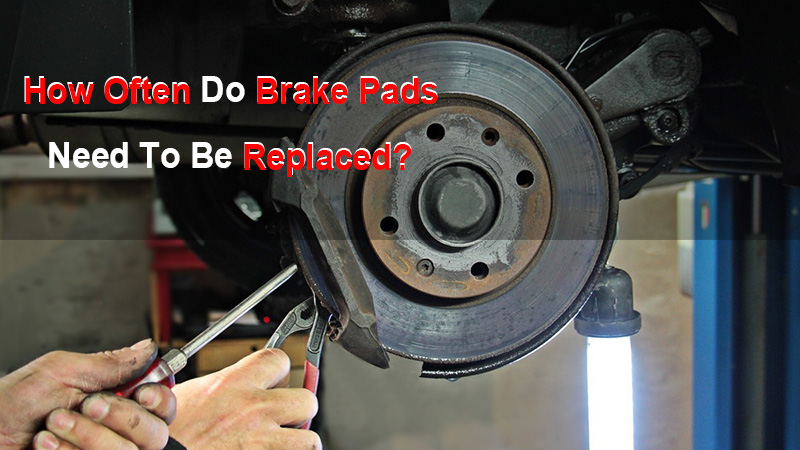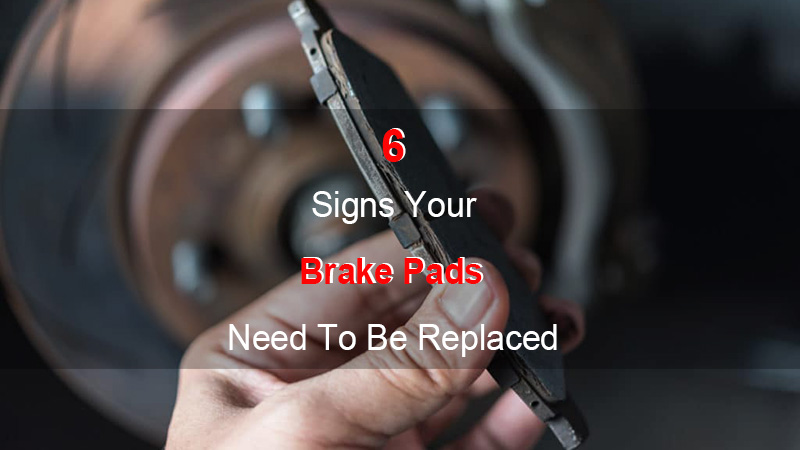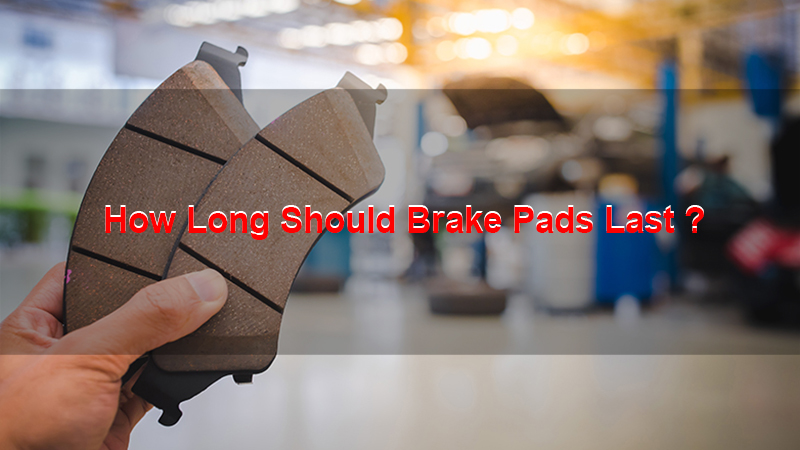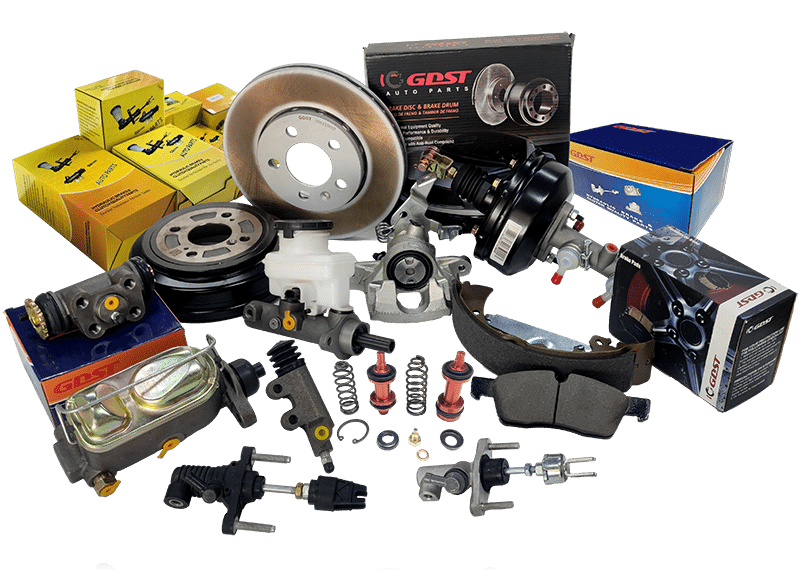Are you in the business of brake pad distribution or wholesale?
To give your clients the right advice, it is important to know their lifespan.
This article will show you how long brake pads should last, the factors that affect their lifespan, and some tips to extend their lifespan.
Brake pads usually last for 30,000 to 70,000 miles. But some brake pads even could last for 100,000 miles. It depends on the brake pad type, vehicle usage, and driving conditions. You can let your customers know this, so that they can make a decision accordingly.
But what affects their lifespan, and how can you tell when it’s time for a replacement?
How Often Do Brake Pads Need to Be Replaced?

The replacement of brake pads depends on many factors. They contribute to the wear rate of brake pads. Normally, we suggest to check and replace brake pads every 10,000 to 20,000 miles. But it depends on the following factors:
- Driving Habits:
Aggressive driving will reduce the life of the brake pad. Smooth braking will extend it. Suggest to drive more gently. - Environment:
Urban driving with frequent stops will wear out the brake pads quickly. Highway driving will make it last longer. - Brake Pad Material:
Different material has different durability and cost. The ceramic pad is expensive but lasts the longest. A metallic pad is a compromise. - Vehicle Type and Use:
Heavy vehicles and vehicles with towing or carrying heavy loads will wear out brake pads quickly. - Quality of Brake Pads:
A good brake pad will make longer service intervals, and save total costs, despite of the higher price.
Can Brake Pads Go Bad in 6 Months?

It might sound surprising, but yes, the brake pads could be worn out in 6 months under extreme conditions.
Understanding the conditions better can help you provide better advice to your clients, ensuring they choose the right products for their needs and driving habits.
- Extreme Driving Conditions:
Frequent aggressive braking and driving in hilly or mountainous regions generate intense friction, leading to rapid brake pad wear. - Low-Quality Brake Pads:
Budget brake pads made from inferior materials wear out quicker, highlighting the importance of investing in high-quality options for longer lifespans and safety. - Heavy Vehicle Use:
Commercial vehicles or those carrying heavy loads exert extra stress on brake pads, causing them to wear out faster. - Improper Installation or Maintenance:
Faulty installation or neglecting brake system maintenance can accelerate pad wear, underscoring the need for professional installation and regular checks. - Environmental Factors:
Driving on gritty, sandy, or salt-treated roads can increase brake pad wear due to abrasive particles and corrosive materials.
Can Brake Pads Last for 2 Years?
If you measure the lifespan of brake pads by time, not mileage, the answer is yes. Normally, brake pads could last 2 to 7 years. The lifetime varies a lot, which depends on the quality of materials and your driving habits.
For example, ceramic brake pads are more expensive than regular ones, but they last longer and offer better performance. It’s a good idea to tell your clients the benefits of premium brake pads, so that they can make the right choice and save money in the long run.
What Are the Signs That Brake Pads Need Replacing?

It is critical for maintaining vehicle safety and performance to identify the right time to replace brake pads. Educating your clients about the following signs can help them recognize when it’s time for a replacement, preventing potential brake failure and ensuring a safer driving experience.
- Squealing Noises
A high-pitched squeal when braking indicates the brake pads are thinning and need replacement. - Longer Stopping Distances
If stopping takes longer, the brake pads might be worn and require changing. - Vibrating Brake Pedal
A vibrating or pulsating brake pedal suggests uneven wear on the brake pads or rotors, signaling a need for inspection. - Thin Pads
Visually inspect the brake pads; if the thickness is less than 1/4 inch, it’s time to replace them. - Grinding Sounds
A metallic grinding sound during braking means the pads are completely worn, potentially damaging the rotor. - Indicator Lights
An illuminated brake pad wear indicator on the dashboard is a direct alert that the pads should be checked and possibly replaced.
Tips for Extending the Life of Your Brake Pads

There are some good habits to extend the life of brake pads. Please suggest your clients to brake smoothly and gradually, avoid overloading, and keep the correct tire pressure to reduce pad wear.
Also, it is a good idea to use engine brake when driving downhill. By sharing these tips, you not only save money for your clients but also show your care for their safety and satisfaction.
- Drive Smoothly
Advise clients to avoid sudden braking or acceleration. Gradually decelerating and driving smoothly will reduce the wear of brake pads. - Control Vehicle Weight
Keeping the vehicle weight within the recommended range can help reduce the burden on brake pads. Suggest to remove unnecessary items in the car. - Use Engine Brake
Using engine brakes, especially when driving downhill, can reduce the dependence on brake pads and extend their life. - Keep Tires at the Proper Pressure
Proper tire pressure can ensure the best braking performance and reduce the wear of brake pads. - Avoid Braking at High Speed
Suggest clients to drive at a moderate speed to reduce the need for hard braking, which will extend the life of brake pads.
Maintenance - Regular brake inspection can detect the wear of brake pads in time and extend their life. Recommend clients to have professional check during maintenance.
Choose the Appropriate Brake Pads - The selection of brake pads for the vehicle and driving conditions will greatly affect the life of them. Offer them the best options.
In Conclusion
Selecting the proper brake pads and knowing how to maintain them is crucial for safety and cost-effectiveness. By understanding the factors that influence their life span and recognizing when to replace them, distributors and wholesalers can offer valuable advice to their customers, ensuring satisfaction and safety on the road. Following the suggestions in this article will help you become a trusted advisor to your clients, assisting them in handling complicated vehicle maintenance and care.




